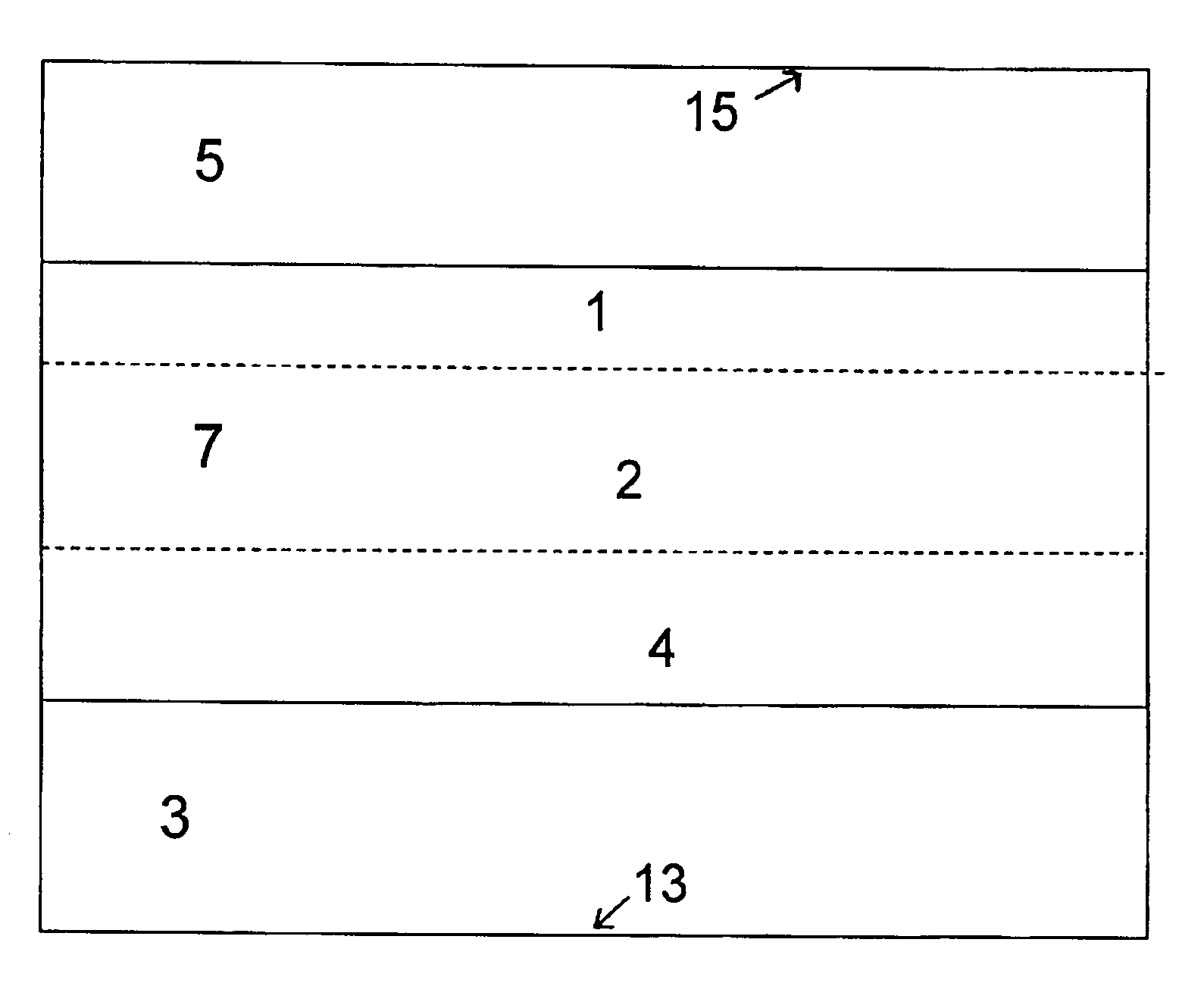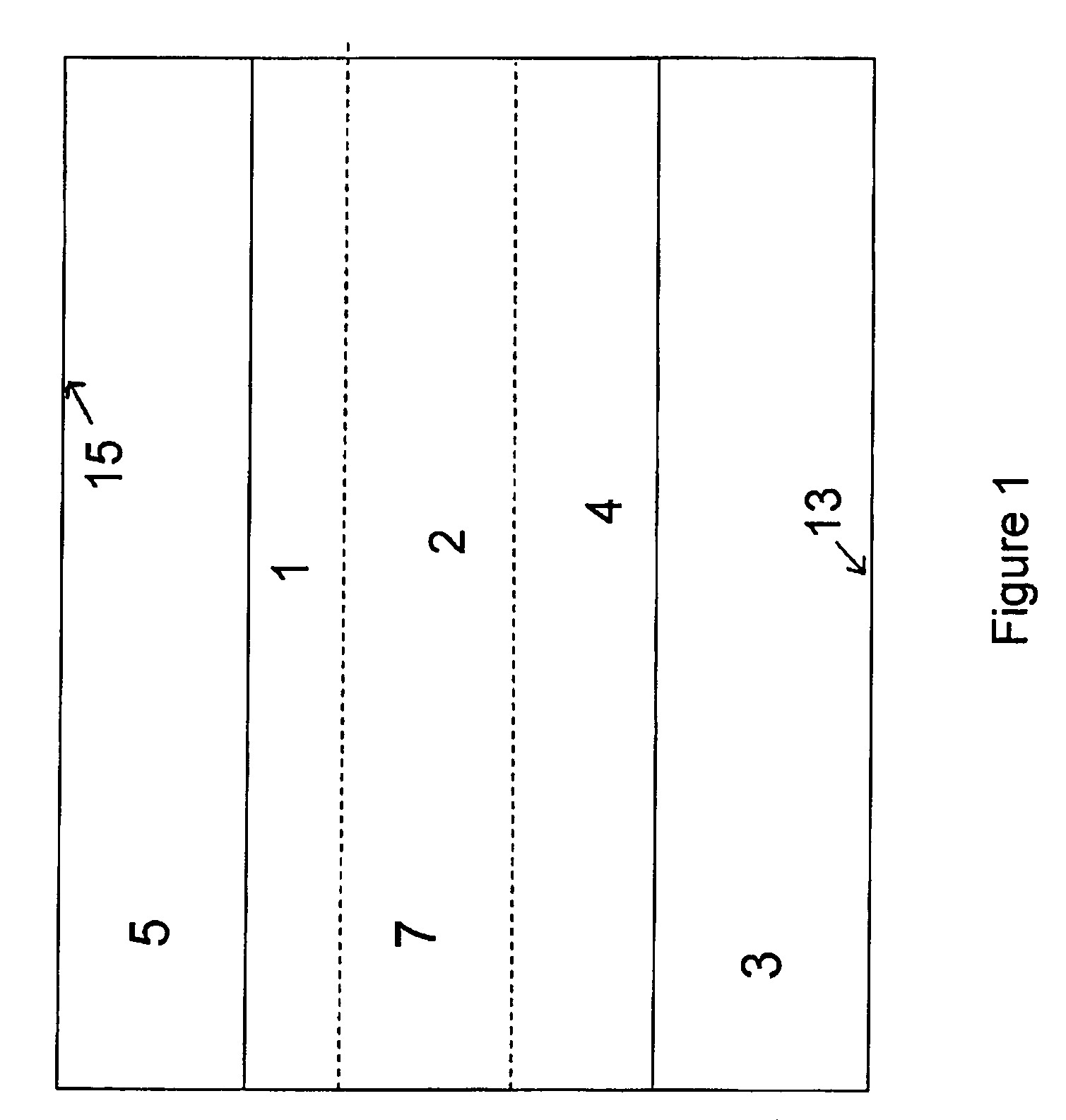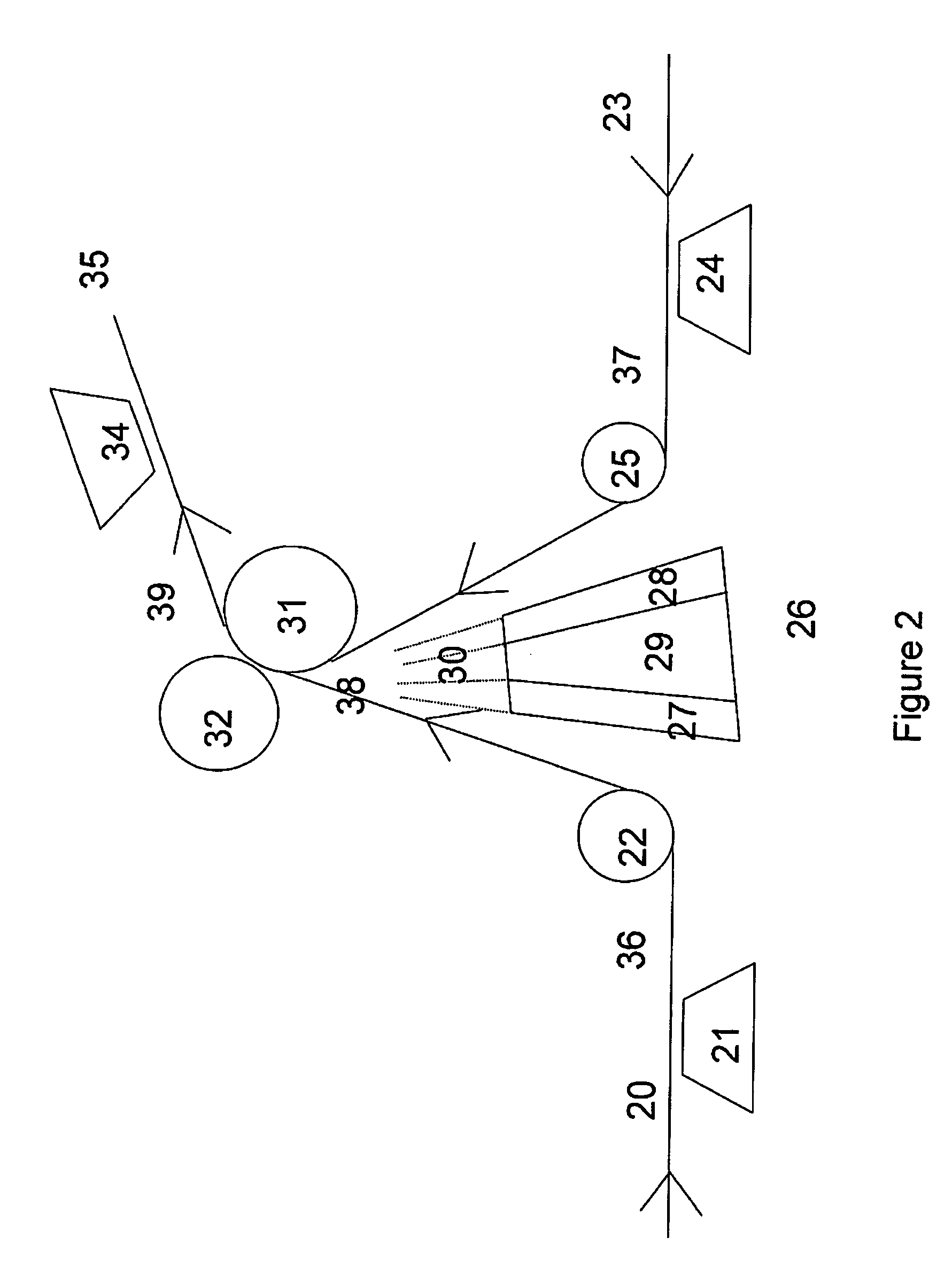Corrugated paperboard
a corrugated paperboard and corrugated paper board technology, applied in the field can solve the problems of reducing the bending stiffness of corrugated paperboard, limiting the use of corrugated paperboard containers, and hydroscopic paperboard, so as to facilitate the introduction of a colour, increase the bulk of the extrusion layer, and reduce the cost
- Summary
- Abstract
- Description
- Claims
- Application Information
AI Technical Summary
Benefits of technology
Problems solved by technology
Method used
Image
Examples
Embodiment Construction
[0061]The lamination shown in the FIG. 1 comprises:
[0062](a) a kraft paper liner 3 that forms an outer region of the lamination and has an outer surface 13,
[0063](b) a layer 5 of PET film, i.e. a water resistant polymer which is resistant to temperatures of at least 150° C. that are typically generated in a corrugating process, that forms an opposed outer region of the lamination and has an outer surface 15, and
[0064](c) an extrusion layer 7 which holds together the liner 3 and the PET layer 5 and is effective at corrugating process temperatures.
[0065]The lamination is formed by extruding the extrusion layer 7 between the PET layer 5 and the kraft liner 3, as is described further by way of example with reference to FIG. 2.
[0066]The extrusion layer 7 comprises a multilayer co-extruded arrangement that comprises:
[0067](a) outer layers 1, 4 of a highly adhesive polymer such as Du Pont resins known by the trade mark ‘Bynel’ that have strong adhesion to heat resistant polymers such as a ...
PUM
| Property | Measurement | Unit |
|---|---|---|
| temperatures | aaaaa | aaaaa |
| thick | aaaaa | aaaaa |
| thick | aaaaa | aaaaa |
Abstract
Description
Claims
Application Information
 Login to View More
Login to View More - R&D
- Intellectual Property
- Life Sciences
- Materials
- Tech Scout
- Unparalleled Data Quality
- Higher Quality Content
- 60% Fewer Hallucinations
Browse by: Latest US Patents, China's latest patents, Technical Efficacy Thesaurus, Application Domain, Technology Topic, Popular Technical Reports.
© 2025 PatSnap. All rights reserved.Legal|Privacy policy|Modern Slavery Act Transparency Statement|Sitemap|About US| Contact US: help@patsnap.com



